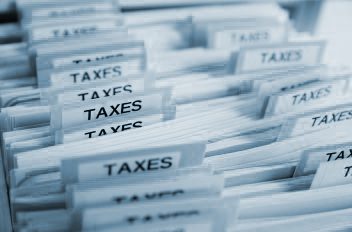The Coronavirus Aid, Relief, and Economic Security (CARES) Act allocated $350 billion to help small businesses keep workers employed amid the pandemic and economic downturn. Known as the Paycheck Protection Program (PPP), the initiative provides 100% federally guaranteed loans to small businesses.
Importantly, these PPP loans may be forgiven if borrowers hire employees back at the same level and rate by June 30, 2020. A loan under the Paycheck Protection Program is eligible to be forgiven in an amount equal to the sum of the payroll costs; payment of interest on a covered mortgage obligation; rent obligations (in place before February 15, 2020); and utility payments (if service began before February 15, 2020) incurred during the 8-week period following disbursement of loan proceeds.
April 24, 2020 UPDATE: The President signed the Paycheck Protection Program and Health Care Enhancement Act (H.R. 266). This Act provides an additional $310 billion in funding to restore the PPP Program, which had run out of money.
The administration’s PPP program guidelines can be found at www.treasury.gov.
SUMMARY OF THE PAYCHECK PROTECTION PROGRAM
Eligibility
- Small businesses and non-profits (S-corp, C-corp, partnerships, independent contractors/self-employed business owner, LLC) with 500 employees or fewer are eligible to apply for the loans. *Certain larger businesses may qualify.
- The primary objective of the PPP is to help prevent workers from losing their jobs and small businesses from going under due to economic losses caused by the COVID-19 pandemic.
- An eligible recipient receiving a loan must make a good faith certification that the uncertainty of prevailing economic conditions makes the loan request necessary to support ongoing operations and that the funds will be used to retain workers, maintain payroll, pay group healthcare benefits including insurance premiums, or make mortgage, lease, or utility payments. In addition, the borrower cannot receive both a loan under this program and an economic injury disaster loan for the same purpose (double dipping).
Use of Funds
- The loans can be used to cover payroll costs*, healthcare costs, mortgage and other debt interest payments, rent and utility payments, and interest on pre-existing debt obligations (debt existing as of 2/15/20).
- No more than 25% of loan proceeds may be used for non-payroll costs
- The money cannot be used to cover:
- Employee/owner annualized compensation over $100,000
- Taxes imposed or withheld under Chapters 21 22, and 24 of the IRS code
- These are FICA and Medicare taxes (Chapter 21), Railroad equivalent FICA and Medicare taxes (Chapter 22) and federal income tax withholding (Chapter 24).
- Compensation of employees whose principal place of residence is outside the U.S.
*75% of loan proceeds must be used for payroll
Maximum Loan Amount Available
- The amount of the loan cannot exceed the sum of 2.5 times the average monthly payroll cost and the amount of Economic Disaster Injury Loan (EIDL) made between January 31, 2020 and April 3, 2020, less the amount of “Advance” as that doesn’t need to be repaid.
- The loan must be capped at $10 million.
Loan Terms
- 2 years
- *Maximum under statute (or CARES Act) is 10 years
- 1% current interest rate
- Zero loan fees
- Zero pre-payment fees
- Collateral and personal guarantees not required
- Payments are deferred by at least six months (but not more than one year)
- SBA’s “credit elsewhere” test is waived
Taxpayers receiving loans under this program are not eligible for the employee retention credit provided for in the CARES Act.
Is there loan deferral?
- First 6 months
Loan forgiveness
A loan under the Paycheck Protection Program is eligible to be forgiven in an amount equal to the sum of the payroll costs; payment of interest on a covered mortgage obligation; rent obligations (in place before February 15, 2020); and utility payments (if service began before February 15, 2020) incurred and paid during the 8-week period following disbursement of the loan proceeds.
The forgiven amount shall not exceed the principal amount of the loan. In addition, the amount of the loan forgiveness is subject to reduction if:
- There is reduction in average full-time equivalent employees
- There are employee wage reductions in excess of 25%
Employers who receive loan forgiveness under this program are not eligible for the employer or self-employed payroll tax payment deferral provided for in the CARES Act.
Any loan amount in excess of the amount forgiven shall be repaid immediately or over 2 years at the current interest rate of 1%.
Is the forgiveness of the loan taxable income?
No, the forgiven loan income is not taxable.
However, the IRS issued Notice 2020-32 on April 30, 2020, which provides guidance regarding the deductibility of expenses related to tax-free loan forgiveness from the Paycheck Protection Program (PPP). The Notice explains that expenses attributable to the loan forgiveness portion are not deductible for tax purposes. Any expenses related to the portion of loans not forgiven will be tax-deductible.
Start to prepare documentation needed for PPP Loan Forgiveness
The actual forgiveness calculation and documentation requirement is still in the works and to be confirmed by the SBA. As a best practice we suggest immediately accumulating supporting documents, either digitally or in paper form, for all eligible costs incurred and paid during the eight-week period following the loan funding. The documents should support that the amount was due, and proof of payment. Consider the following examples of supporting documentation to accumulate:
- Payroll costs: supporting documents would include payroll register for each payroll listing the employee name, and gross pay and hours worked. This includes vacation and sick time paid.
- Employer group health care costs: supporting documents would include a copy of the invoice for payment.
- Retirement contributions: documentation of calculation and confirmation of payment.
- State unemployment taxes: copy of the confirmation of payment
- Mortgage interest: a copy of the remittance payment voucher or statement from the lender showing the payment history during the applicable period split out between interest and principal
- Rent: a copy of the lease agreement in force before 2/15/2020; a copy of the 2019 1099 issued.
- Utilities: copies of invoices for electricity, gas, water, telephone and internet.
- In addition to the above documents to support the obligation; copies of bank statements during the period to show proof of payment of the obligations either via check or auto payment.
Questions? Contact one of our experts or call us at (888) 388-1040.
This article was last updated on 5-21-20 at 12 p.m.



